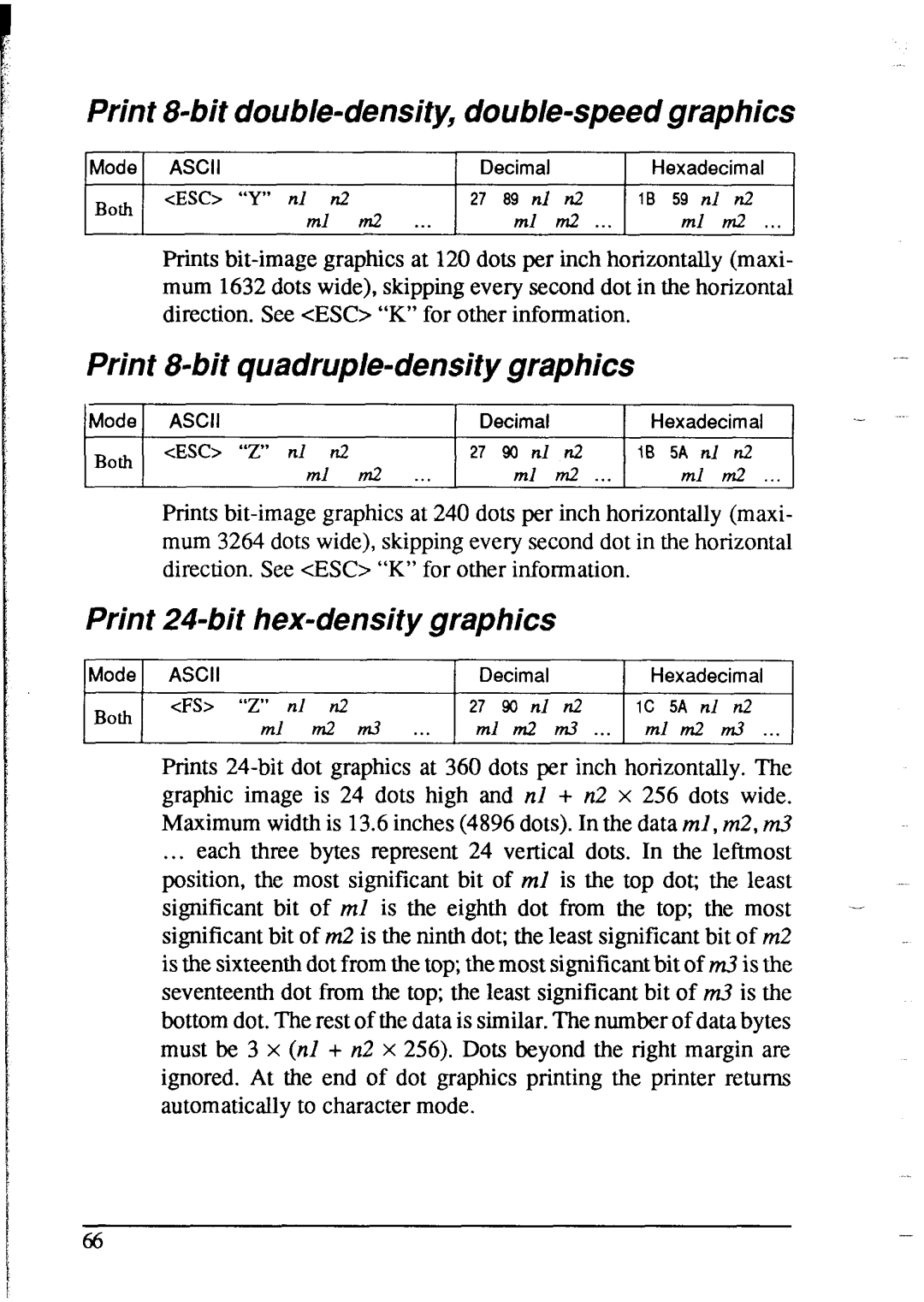
Print g-bit double-density, double-speed graphics
Mode | ASCII |
|
| Decimal |
| Hexadecimal | ||
Both | cESC> “I”’ nl | n2 |
| 27 09 nl | n2 | 1B 59 nl | n2 | |
ml | m2 | . . . | ml | m2 . . . | ml | m2 . . . | ||
| ||||||||
Prints
Print g-bit quadruple-density graphics
Mode | ASCII |
|
|
| Decimal |
| Hexadecimal | |
Both | cESC> 7” | nl | n2 |
| 27 90 nl | n2 | IB 54 nl | ni? |
| ml | m2 | . . . | ml | m2 .,. | ml | m2 | |
|
| |||||||
Prints
Print 24-bit hex-density graphics
Mode | ASCII |
|
| Decimal | Hexadecimal | |
Both | cFS> “Z” nl | n2 |
| 27 90 nl n2 | 1C 5A nl n2 | |
ml | m2 rd | . . . | ml m2 m3 . . . | ml m2 m3 .., | ||
|
Prints
. . . each three bytes represent 24 vertical dots. In the leftmost position, the most significant bit of ml is the top dot; the least significant bit of ml is the eighth dot from the top; the most significant bit of m2 is the ninth dot; the least significant bit of m2 is the sixteenth dot from the top; the most significant bit of m3 is the seventeenth dot from the top; the least significant bit of m3 is the bottom dot. The rest of the data is similar. The number of data bytes must be 3 x (nl + n2 x 256). Dots beyond the right margin are ignored. At the end of dot graphics printing the printer returns automatically to character mode.
-
66
-
